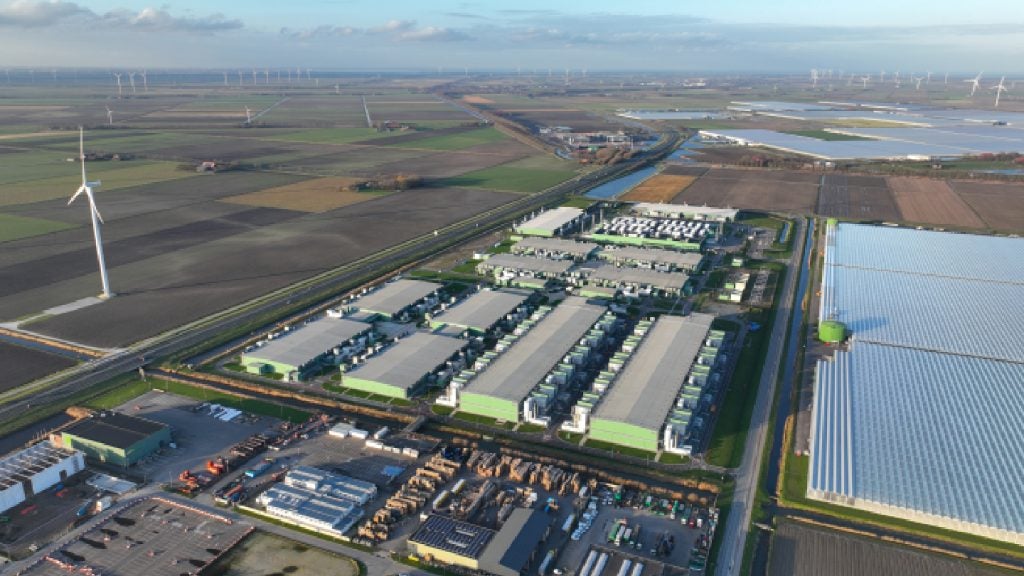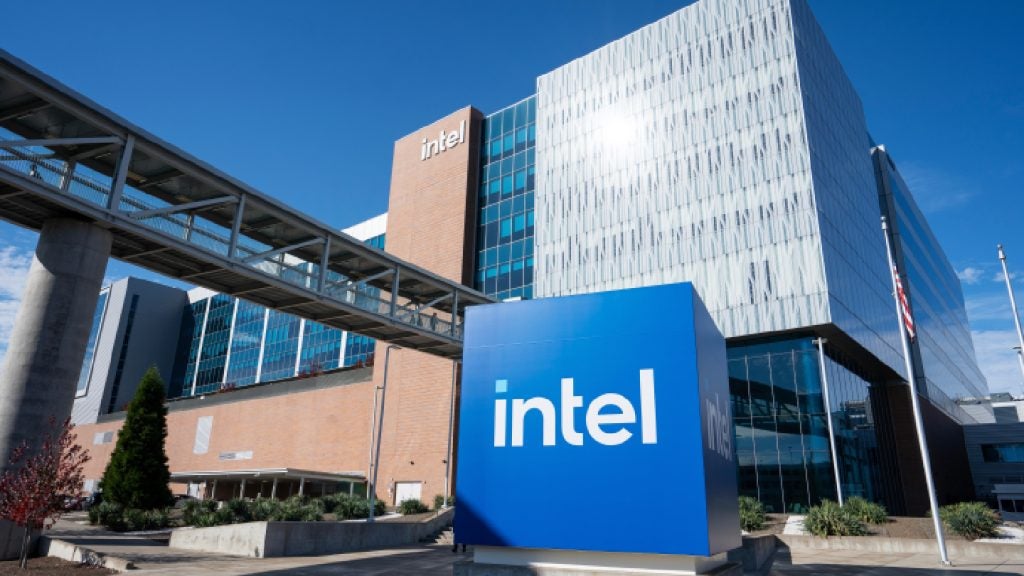
2019 has seen artificial intelligence and machine learning take centre stage for many industries, with companies increasingly looking to harness the benefits of the technology for a wide range of use cases. With its advances, ethical implications and impact on humans likely to dominate conversations in the technology sector for years to come, how will AI continue to develop over the next 12 months?
We’ve asked experts from a range of organisations within the AI sphere to give their predictions for 2020.

Access deeper industry intelligence
Experience unmatched clarity with a single platform that combines unique data, AI, and human expertise.
2020 artificial intelligence predictions
Organisations will build in processes and policies to prevent and address potential biases in AI
In both the private and public sectors, organisations are recognising the need to develop strategies to mitigate bias in AI. With issues such as amplified prejudices in predictive crime mapping, organisations must build in checks in both AI technology itself and their people processes. One of the most effective ways to do this is to ensure data samples are robust enough to minimise subjectivity and yield trustworthy insights. Data collection cannot be too selective and should be reflective of reality, not historical biases.
In addition, teams responsible for identifying business cases and creating and deploying machine learning models should represent a rich blend of backgrounds, views, and characteristics. Organisations should also test machines for biases, train AI models to identify bias, and consider appointing an HR or ethics specialist to collaborate with data scientists, thereby ensuring cultural values are being reflected in AI projects.
Zachary Jarvinen, Head of Technology Strategy, AI and Analytics, OpenText
Deepfakes will become a serious threat to corporations
A big trend for social media this year has been the rise of deepfakes and we’re only likely to see this increase in the year ahead. These are manipulated videos that are made to look real, but are actually inaccurate representations powered by sophisticated AI. This technology has implications for past political Facebook posts. I believe we will start to see threat actors use deepfakes as a tactic for corporate cyberattacks, in a similar way to how phishing attacks operate.

US Tariffs are shifting - will you react or anticipate?
Don’t let policy changes catch you off guard. Stay proactive with real-time data and expert analysis.
By GlobalDataCyber crooks will see this as a money-making opportunity, as they can cause serious harm on unsuspecting employees. This means it will be vital for organisations to keep validation technology up-to-date. The same tools that people use to create deepfakes will be the ones used to detect them, so we may see an arms race for who can use the technology first.
Jesper Frederiksen, VP and GM EMEA, Okta
Candidate (and employee) care in the world of artificial intelligence
When considering high-volume, fast turnaround hiring efforts, it’s often impossible to keep every candidate in the loop. Enter highly sophisticated artificial intelligence tools, such as chatbots. More companies are now using AI programs to inform candidates quickly and efficiently on where they stand in the process, help them navigate career sites, schedule interviews and give advice. This is significantly transforming the candidate experience, enhancing engagement and elevating overall satisfaction.
Chatbots are also increasingly becoming a tool for employees who wish to apply for new roles within their organisation. Instead of trying to work up the nerve to ask HR or their boss about new opportunities, employees can interact with a chatbot that can offer details about open jobs, give skills assessments and offer career guidance.
What’s more, some companies are offering “day in the life” virtual simulations that allow candidates to see what a role would entail, which can either enhance interest or help candidates self-select out of the process. It also helps employers understand if the candidate would be a good fit, based on their behavior during the simulation. In Korn Ferry’s global survey of HR professionals, 78 percent say that in the coming year, it will be vital to provide candidates with these ‘day in the life” type experiences.
Byrne Mulrooney, Chief Executive Officer, Korn Ferry RPO, Professional Search and Korn Ferry Digital
AI will augment humans, not replace them
Despite fears that it will replace human employees, in 2020 AI and machine learning will increasingly be used to aid and augment them. For instance, customer service workers need to be certain they are giving customers the right advice. AI can analyse complex customer queries with high numbers of variables, then present solutions to the employee – speeding up the process and increasing employee confidence.
Lufthansa for one is already using this method, and – with a faster, more accurate and ultimately more satisfying customer experience acting as a significant differentiator – more will follow. Over the next three years this trend will keep accelerating, as businesses from banks to manufacturers use AI to support their employees’ decisions and outperform the competition.
Felix Gerdes, Director of Digital Innovation Services at Insight UK
Greater demand for AI understanding
In 2020 we’re going to see increased public demand for the demystification and democratisation of AI. There is a growing level of interest and people are quite rightly not happy to sit back and accept that a robot or programme makes the decisions it does ‘because it does’ or that it’s simply too complicated. They want to understand how varying AI works in principle, they want to have more of a role in determining how AI should engage in their lives so that they don’t feel powerless in the face of this new technology.
Companies need to be ready for this shift, and to welcome it. Increasing public understanding of AI, and actively seeking to hear people’s hopes and concerns is the only way forward to ensure that the role of AI is both seen as a force for good for everyone in our society and as a result able to realise the opportunity ahead – historically not something that tech industry as a whole have been good at, we need to change.
Teg Dosanjh, Director of Connected Living for Samsung UK and Ireland
Ramp up in autonomous vehicles
As the next decade of the transforming transportation industry unfolds, investment in autonomous vehicle development will continue to grow dramatically, especially in the datacenter and AI infrastructure for training and validation. We’ll see a significant ramp in autonomous driving pilot programs as part of this continued investment. Some of these will include removal of the on-board safety driver. Autonomous driving technology will be applied to a wider array of industries, such as trucking and delivery, moving goods instead of people.
Production vehicles will start to incorporate the hardware necessary for self-driving, such as centralized onboard AI compute and advanced sensor suites. These new features will help power Level 2+ AI assisted driving and lay the foundation for higher levels of autonomy. Regulatory agencies will also begin to leverage new technologies to evaluate autonomous driving capability, in particular, hardware-in-the-loop simulation for accurate and scalable validation. The progress in AV development underway now and for the next few years will be instrumental to the coming era of safer, more efficient transportation.
Danny Shapiro, Senior Director of Automotive, NVIDIA
To fully take advantage of AI technologies, you’ll need to retrain your entire organisation
As AI tools become easier to use, AI use cases proliferate, and AI projects are deployed, cross-functional teams are being pulled into AI projects. Data literacy will be required from employees outside traditional data teams—in fact, Gartner expects that 80% of organisations will start to roll out internal data literacy initiatives to upskill their workforce by 2020.
But training is an ongoing endeavor, and to succeed in implementing AI and ML, companies need to take a more holistic approach toward retraining their entire workforces. This may be the most difficult, but most rewarding, process for many organisations to undertake. The opportunity for teams to plug into a broader community on a regular basis to see a wide cross-section of successful AI implementations and solutions is also critical.
Retraining also means rethinking diversity. Reinforcing and expanding on how important diversity is to detecting fairness and bias issues, diversity becomes even more critical for organisations looking to successfully implement truly useful AI models and related technologies. As we expect most AI projects to augment human tasks, incorporating the human element in a broad, inclusive manner becomes a key factor for widespread acceptance and success.
Roger Magoulas, VP of Radar at O’Reilly
BERT will open up a whole new world of deep learning use cases
The hottest trend in the industry right now is in Natural Language Processing (NLP). Over the past year, a new method called BERT (Bidirectional Encoder Representations from Transformers) has been developed for designing neural networks that work with text. Now, we suddenly have models that will understand the semantic meaning of what’s in text, going beyond the basics. This creates a lot more opportunity for deep learning to be used more widely.
Almost every organisation has a need to read and understand text and spoken word – whether it is dealing with customer enquiries in the contact centre, assessing social media sentiment in the marketing department or even deciphering legal contracts or invoices. Having a model that can learn from examples and build out its vocabulary to include local colloquialisms and turns of phrase is extremely useful to a much wider range of organisations than image processing alone.
Björn Brinne, Chief AI Officer at Peltarion
Voice technologies will infiltrate the office
Voice assistants have established themselves as common place in our personal lives. But 2020 will see an increasing amount of businesses turning to them to improve and personalise the customer experience.
This is because, advances in AI-driven technology and natural language processing are enabling voice interactions to be translated into data. This data can be structured so that conversations can be analysed for insights.
Next year, organisations will likely begin to embrace conversational analytics to improve their chatbots and voice applications. This will ultimately result in better data-driven decisions and improved business performance.
Alberto Pan, Chief Technical Officer, Denodo
IT will run itself while data acquires its own DNA
Organisations are already drowning in data, but the flood gates are about to open even wider. IDC predicts that the world’s data will grow to 175 zettabytes over the next five years. With this explosive growth comes increased complexity, making data harder than ever to manage. For many organisations already struggling, the pressure is on.
Yet the market will adjust. Over the next few years, organisations will exploit machine learning and greater automation to tackle the data deluge.
Machine learning applications are constantly improving when it comes to making predictions and taking actions based on historical trends and patterns. With its number-crunching capabilities, machine learning is the perfect solution for data management. We’ll soon see it accurately predicting outages and, with time, it will be able to automate the resolution of capacity challenges. It could do this, for example, by automatically purchasing cloud storage or re-allocating volumes when it detects a workload nearing capacity.
At the same time, with recent advances in technology we should also expect to see data becoming more intelligent, self-managing and self-protecting. We’ll see a new kind of automation where data is hardwired with a type of digital DNA. This data DNA will not only identify the data but will also program it with instructions and policies.
Adding intelligence to data will allow it to understand where it can reside, who can access it, what actions are compliant and even when to delete itself. These processes can then be carried out independently, with data acting like living cells in a human body, carrying out their hardcoded instructions for the good of the business.
However, with IT increasingly able to manage itself, and data management complexities resolved, what is left for the data leaders of the business? They’ll be freed from the low-value, repetitive tasks of data management and will have more time for decision-making and innovation. In this respect AI will become an invaluable tool, flagging issues experts may not have considered and giving them options, unmatched visibility and insight into their operations.
Jasmit Sagoo, Senior Director, Head of Technology UK&I at Veritas Technologies
The ethics of AI
2020 will be the year research & investment in ethics and bias in AI significantly increases. Today, business insights in enterprises are generated by AI and machine learning algorithms. However, due to these algorithms being built using models and data bases, bias can creep in from those that train the AI. This results in gender or racial bias be it for mortgage applications or forecasting health problems. With increased awareness of bias in data, business leaders will demand to know how AI reaches the recommendations it does to avoid making biased decisions as a business in the future.
Ashvin Kamaraju, CTO for Cloud Protection and Licensing activity at Thales
Health data and AI
2020 will be the year of health data. Everyone is agreed that smarter use of health data is essential to providing better patient care – meaning treatment that is more targeted or is more cost effective. However, navigating through the thicket of consents and rules as well as the ethical considerations has caused a delay to advancement of the use of patient data.
There are now several different directions of travel emerging which all present exciting opportunities for patients, for health providers including the NHS, for Digital Health companies and for pharmaceutical companies.
Marcus Vass, Partner, Osborne Clarke
New applications to emerge
Artificial intelligence isn’t just something debated by techies or sci-fi writers anymore – it’s increasingly creeping into our collective cultural consciousness. But there’s a lot of emphasis on the negative. While those big picture questions around ethics cannot and should not be ignored, in the near-term we won’t be dealing with the super-AI you see in the movies.
I’m excited by the possibilities we’ll see AI open up in the next couple of years and the societal challenges it will inevitably help us to overcome. And it’s happening already. One of the main applications for AI right now is driving operational efficiencies and that may not sound very exciting, but it’s actually where the technology can have the biggest impact. If we can use AI to synchronise traffic lights to impact traffic flow and reduce the amount of time cars spend idling, that doesn’t just make inner city travel less of a headache for drivers – it can have a tangible impact on emissions. That’s just one example. In the next few years, we’ll see AI applied in new, creative ways to solve the biggest problems we’re facing as a species right now – from climate change to mass urbanisation.
Dr Anya Rumyantseva, Data Scientist at Hitachi Vantara
Unlocked data will supercharge AI
Businesses are investing more in AI each year, as they look to use the technology to personalize customer experiences, reduce human bias and automate tasks. Yet for most organizations AI hasn’t yet reached its full potential, as data is locked up in siloed systems and applications.
In 2020, we’ll see organizations unlock their data using APIs, enabling them to uncover greater insights and deliver more business value. If AI is the ‘brain,’ APIs and integration are the ‘nervous system’ that help AI really create value in a complex, real-time context.
Ian Fairclough, VP of Services, MuleSoft
Manipulating AI
2020 is going to be a tipping point, when algorithmic decision making AI will become more mainstream. This brings both opportunities and challenges, particularly around the explainability of AI. We currently have many blackbox models where we don’t know how it’s coming to decisions. Bad guys can leverage this and manipulate these decisions.
Using machine identities, they will be able to infiltrate the data streams that feed into an AI models and manipulate them. If companies are unable to explain and see the decision making behind their AI this could go unquestioned, changing the outcomes. This could have wide reaching impacts in everything from predictive policing to financial forecasting and market decision making.
Kevin Bocek, Vice President, Security Strategy & Threat Intelligence at Venafi
AI to become an intrinsic part of RPA
Until now, robotic process automation (RPA) and artificial intelligence (AI) have been perceived as two separate things: RPA being task oriented, without intelligence built in. However, as we move into 2020, AI and machine learning (ML) will become an intrinsic part of RPA – infused throughout analytics, process mining and discovery. AI will offer various functions like natural language processing (NLP) and language skills, and RPA platforms will need to be ready to accept those AI skill sets. More broadly, there will be greater adoption of RPA across industries to increase productivity and lower operating costs. Today we have over 1.7 million bots in operation with customers around the world and this number is growing rapidly. Consequently, training in all business functions will need to evolve, so that employees know how to use automation processes and understand how to leverage RPA, to focus on the more creative aspects of their job.
RPA is set to see adoption in all industries very quickly, across all job roles, from developers and business analysts, to programme and project managers, and across all verticals, including IT, BPO, HR, Education, Insurance and Banking. To facilitate continuous learning, companies must give employees the time and resources needed to upskill as job roles evolve, through methods such as micro-learning and just in time training. In the UK, companies are reporting that highly skilled AI professionals, currently, are hard to find and expensive to hire, driving up the cost of adoption and slowing technological advancement. Organisations that make a conscious decision to use automation in a way that enhances employees’ skills and complements their working style will significantly increase the performance benefit they see from augmentation.
James Dening, Vice President for Europe at Automation Anywhere
Read more: Artificial intelligence to create 133 million jobs globally: Report







